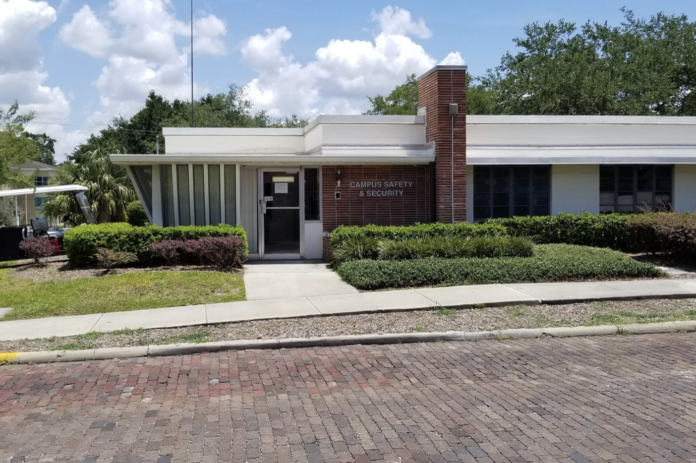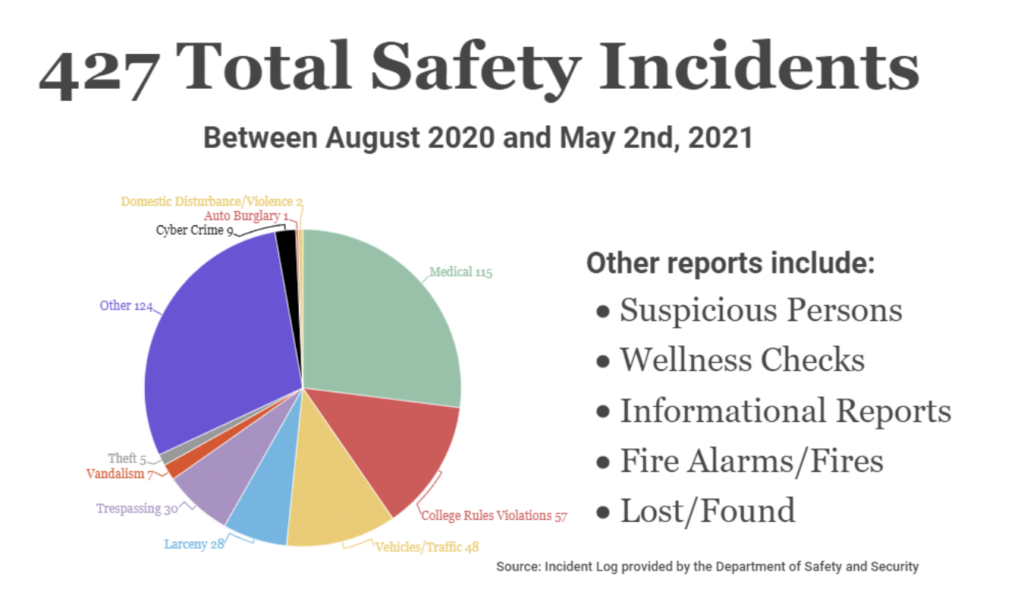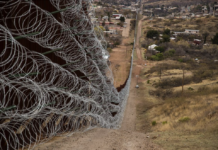
By Lawton Bauer, Southern staff writer
On April 18, the inaugural meeting of the newly created Safety Advisory Council met in the cafeteria of the Roberts Academy off of Frank Lloyd Wright Way. This council, made up of the leaders from various student-led organizations, met to discuss the state of the Safety Department on the campus of Florida Southern College.
Lexi Potter, one of the principal organizers for the creation of the council, felt proud about how her work had transformed from an idea pitched in the Director of Safety and Security’s office into a full-fledged administrative team.
“I [had] stopped by Eric Rauch’s office to share with him a list of concerns I had been hearing about campus safety from a number of my peers,” Potter said.
“I need more students like Lexi to come forward and tell us how we are doing,” said Eric Rauch. “I have an open-door policy, any student that wants to come in, I’ll take time to sit down with every single student we have to hear their views or hear ways we can improve our processes. If you don’t know what’s broken, you can’t fix it, and I can’t fix it if I find out about it six months later.”
Both Potter and Rauch agreed that the college needed an avenue that the student body could use to bring up concerns of theirs to the Safety department directly.
This student body, featuring student leaders ranging from the Black Student Union and the Asian and Pacific Islander Student Association, to Student Government, Community Living, and the Interfraternity Council, is supposed to be a representation of every type of student perspective on campus.
The mission of the Student Advisory Council is to improve communication between the Department of Safety and the general student body. Members of Safety like Rauch, his deputy Rusty Longaberger, representatives of the different shifts of Safety officers, and the Lakeland Police Department officers who serve on-campus were all in attendance during the inaugural meeting, all of whom sat and listened to the concerns that the student leaders had at that time.
Currently, the Department of Safety primarily communicates with mass emails and text messages about Safety situations. Some students, like senior Stephanie Burnette, question their efficacy.
“The mass emails that Safety sends out about incidents on campus always seem to be received poorly,” Burnette said. “A lot of the students feel as if Safety isn’t doing enough. I think Safety needs to provide concrete examples of what they’re doing to keep the students safe.”
Matthew Fream, a freshman who lives on-campus, agrees that Safety could be doing more to better communicate how they protect the student body.
“I’m not that afraid myself,” said Fream. “But my smaller and more frail friends, I worry for their safety instead.”
Fream cites one example of a pair of Safety incidents involving similar reports of attempted kidnapping along Johnson Avenue on Nov. 10, 2021, as evidence for criticism. He believes that Safety prioritizes a positive perception from the administration of the school over their duty to protect the students of campus. Many students, including Fream, believe that one or both of these incidents were not investigated properly, instead being swept under the rug and dismissed in one campus-wide email.
Rauch said that both incidents were fully investigated by the department. One claim did not have any evidence that backed up the details of the accusation when surveillance video was reviewed. The second claim was between the reporting student and a driver attempting to allow a FedEx truck to pass him while traveling the wrong way down one-way Johnson avenue.
“In a day and age of social media, what is said in the beginning gets spread to four or five different people,” Rauch said. “You may not be dealing with facts, if they weren’t facts that were released from an authority from the beginning. You start getting speculation.”
Potter hopes that conflicts like this can be resolved through active communication, and that the council is the first step towards a better working relationship between Safety and the student body.
“The frightened “us vs them” mentality that might happen between safety and students could be remedied by a group like this,” said Potter. “Students need to see tangible examples of the work that people are doing on this campus to advocate for them.”
The council is slated to meet twice every semester, with the ability to convene if there is an urgent situation on campus that needs to be addressed quickly. When asked why the Council had selected this specific timeframe, Rauch clarified that the Department was open to more frequent meetings, but also understood the time commitments of the students on the council needed to be considered as well.
All parties involved hope that this Council can serve as an avenue of communication between students and Safety. This may shine a light on some of the good that Safety does in addition to outlining what Safety doesn’t do well and develop ways to correct the problem.
“I’ve had to get into one of the Polk science labs twice a day this whole semester,” said Burnette. “I have met a few really nice, amazing safety officers [while they unlocked the labs], including Juan the G.O.A.T. [Greatest of All Time] who would tell me a new joke every time I saw him.”








